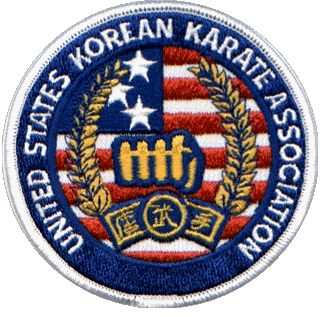 |
||||||||||||||||||||||||||||||||
|
|
||||||||||||||||||||||||||||||||
 |
|||
 |
|||
|
Bullying is a very complex dynamic. When we hear of someone being “bullied,” we usually assume that kids are involved. In reality, adults are bullied just like children are. This treatise will deal with protecting children, but it would be the same pathway to protect an adult! One of the key characteristics of bullying is an “imbalance of power,” real or perceived. Whether the bullying is occurring in the workplace or on the playground, there will be an imbalance of power. The imbalance can be physical in nature, where someone is bigger, stronger, tougher, etc. The bully will use these elements to “manhandle” his/her victim. This physical contact can be knocking books out of someone’s hands to beating someone up. The imbalance can also be psychological in nature. Threats, exclusion, name-calling, gossiping and the spreading of rumors are some examples of psychological bullying. The imbalance of power is used with the “intent to harm” someone, which is carried out. This harm can be caused to one’s body, self-esteem, feelings, reputation, etc. Fear and distress will also be caused to the victim, due to the physical or psychological attacks perpetrated by the bully. Worse yet, this destructive behavior is repetitive. Bullies don’t just pick on people once and call it good. They will do it over and over again, they want the victim to be in fear of future attacks. In fact, bullies will take some pleasure out of seeing their victims suffer. As long as they think they can get away with it, the bully will continue with this behavior, in fact, they are likely to escalate, if they are not stopped. For whatever reason, the bully wants to subjugate the will of their victim. Victims of bullying will suffer feelings of inadequacy, shame, guilt and a sense of helplessness from not being able to handle or stop the aggressive behavior that is directed at them. These feelings will lead to a loss of self-confidence and self-esteem. Long time victims will end up withdrawing and isolating themselves. In addition to becoming anti-social, victims many times, will carry these feelings of inadequacy, guilt and shame into adulthood. This is why it is imperative that we put a stop to the bullying as early as we can, in the lives of the bully as well as the victim. Even though we’ve been talking mainly about the victim, here; the bully will also suffer negative effects of his own bad behavior. He/she will exhibit their own antisocial behaviors. There are some who believe that “conflict resolution” or “peer mediation” can be used to combat bullying. Almost all experts do not agree with this. By definition, conflict resolution and peer mediation deal with conflict between people who are “equals,” i.e., peers. By definition, bullying is NOT between two equals, the bully has the imbalance of power tipped in his/her favor, so conflict resolution and peer mediation would not be effective in cases of bullying. It is a well known fact that proper Martial Arts training is one of the best ways to instill self-confidence and self-esteem in children (adults, too!). Proper Martial Arts training starts a student in the physical realm of learning how to block, punch and kick. Then the student will add footwork to the mix. Students feel a sense of accomplishment after they put these initial movements together. Then, after individual movements and their requisite footwork are learned, these movements and footwork are put into combinations with other movements to form block and counterattack sequences that are the basis for self-defense. After that, these block and counter sequences are performed with a partner, as a prerequisite for free sparring. Throughout this entire pathway, students will feel challenged to learn all these movements with their hands and feet, they will begin to gain balance (eventually grace) in motion, they will be challenged to stand on one leg and kick many different ways with the other. This challenge will open the door to satisfaction and a feeling of accomplishment as students become more proficient with all the movements taught in class. It is this feeling of accomplishment that occurs regularly in Martial Arts class that leads to higher self-esteem and self-confidence. Students will transition from primarily training that is mostly in the physical realm, at first, to more in the mental realm as they grow in their Martial Arts life and as they climb higher in rank. Self-esteem and increased self-confidence grows as the Martial Artist grows. The challenge of learning self-defense movements with the goal of being able to fend off an aggressor requires that students learn skills to be performed at a high level of competency, if students are going to be able to prevail over a larger, stronger assailant. A good Martial Arts instructor will keep challenging his/her students throughout their training life. The challenge, learning and feeling of accomplishment is an ongoing process. If that process goes on for YEARS, not only will students raise their level of skill in self-defense and competition, they will feel continuing feelings of accomplishment, which in turn, bolsters self-confidence and self-esteem. When children experiences years of this scenario, the outcome will be students who are respectful, confident and competent. In addition, these students will have self-confidence and high self-esteem! Some health care professionals are aware of the benefits of Martial Arts training for children with certain, particular issues. Of course, proper Martial Arts training will benefit ALL children! |
| [Home] [Master Floyd Soo] [Self Defense] [Anti-Bullying] [Club Information] [Art & Founder] [Tang Soo Do Info] [Current Events] [Photo Album 1] [Photo Album 2] [Photo Album 3] [Photo Album 4] [Photo Album 5] [Photo Album 6] [Photo Album 7] [Photo Album 8] [Photo Album 9] [Photo Album 10] [Photo Album 11] [Photo Album 2012] [Photo Album BB Test] [Of Interest] [Inspiration] [Testimonials] [Class Schedule] [Pontiac Class] [Goodies] [Members Only] [Contact us & Links] |